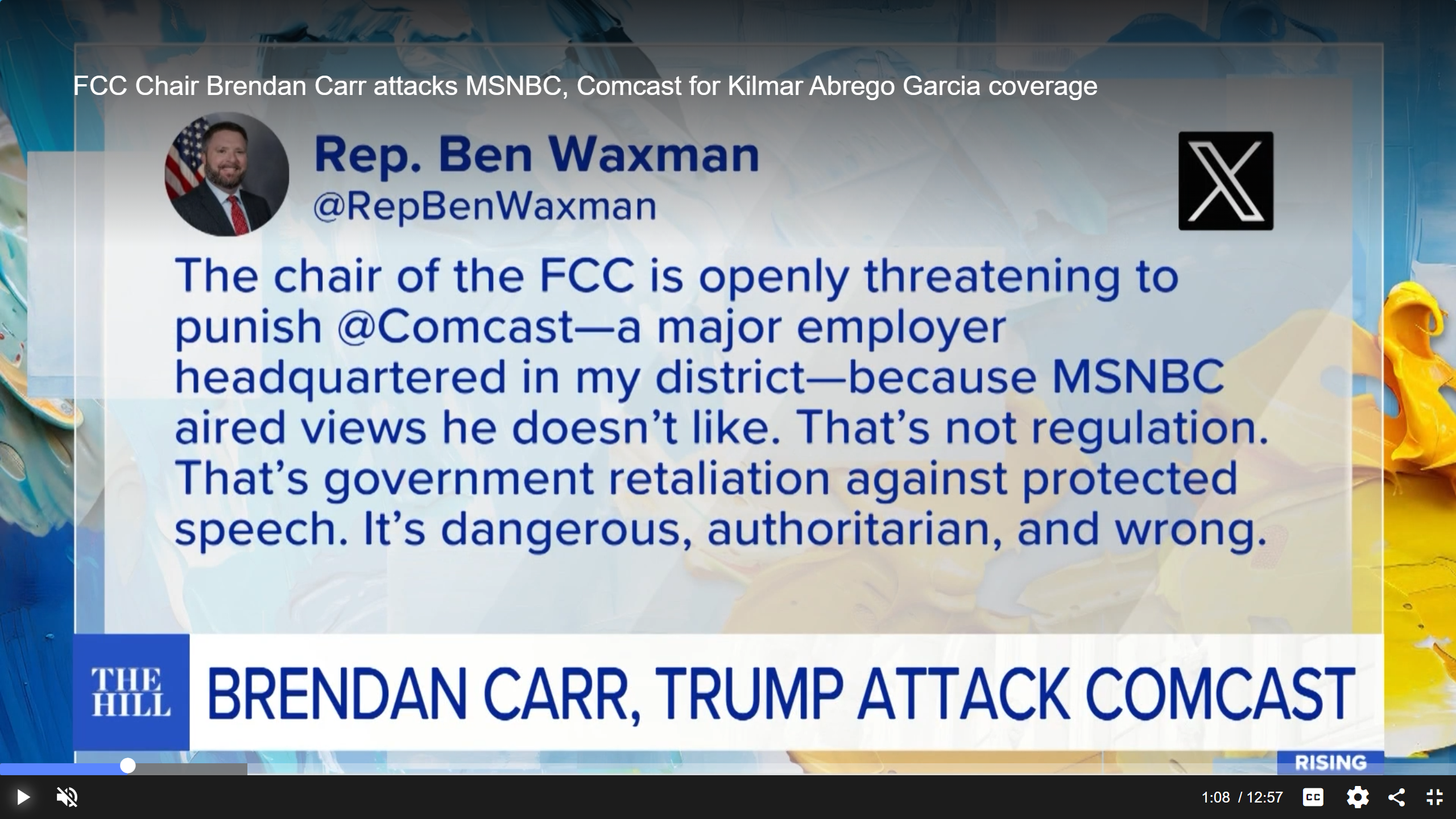ATSC 3.0: We’re on Our Own
Since TV broadcasting was launched 70 years ago in the U.S., broadcasters have operated under an agreement with the federal government that in exchange for spectrum, TV stations would abide by a set of rules in which they would provide services and information in the public interest.
Some might say that such rules have done more to hurt broadcasters’ ability to compete in the modern media landscape but sometimes they have helped the industry move forward, technologically. Take the DTV transition for example. Without government approval of a standard, tuner requirements and discounted set-top boxes, the path to digital would have been much more difficult. In essence, broadcasters had certain protections that competitors never had.
Now with a new standard—ATSC 3.0— on the horizon, broadcasters face an either/ or dilemma. Either we push for a mandated standard, with the resultant battles with other industries, or we adopt a market-driven approach and force the technology to stand on its own. The lack of backward compatibility with ATSC 1.0 put the kibosh on the first approach. And besides, the fact that the industry put the standardization of ATSC 3.0 on the fast track illustrated the realities of today’s consumer tech market—the pace of change and adoption of new platforms has greatly accelerated and the video market was not going to wait for broadcasters. And the greatest wild card in all of this is the spectrum auctions, prompting the question of how many broadcasters will be left in the game when the dust has settled.
So perhaps it wasn’t so surprising when, a week before the NAB Show, the NAB, Consumer Technology Association, America’s Public Television Stations (APTS) and Advanced Warning and Response Network Alliance filed a joint petition to the FCC to voluntarily implement ATSC 3.0 while continuing to broadcast ATSC 1.0. “This petition ... asks the commission to amend its rules to allow broadcasters to use the signaling portion of the physical layer of the new ATSC 3.0 broadcast standard, while they continue to deliver current-generation DTV broadcast service to their communities,” according to the filing.
FCC Chairman Tom Wheeler responded by telling an NAB Show audience that the commission would put the petition out for public comment by the end of April, and he held to his word when the FCC issued its notice the following week. Comments are due May 26 with reply comments due June 27.
Having the CTA onboard is considered a major coup in this drive for implementation, however that’s no guarantee of success. Trade associations can only promote and lobby, they can’t impose rules. And companies will always find a way around them; witness Vizio’s recent announcement that it would begin selling “tunerfree” displays in the U.S., skirting the tuner mandate. CTA says it supports a voluntary implementation and, despite its exhortations about ushering in a new “Golden Age” of television technology, it cannot force its members to do anything else when it comes to promoting next-gen TV.
When it comes to ATSC 3.0, the broadcast industry is on its own. ATSC 3.0 is an amazing new standard, with amazing features and technical advances—just ask anyone who visited the several ATSC 3.0 showcases at the NAB Show. And the excitement at the recent annual ATSC meeting was palpable. And getting the consumer devices into the market is crucial as well. But all of that will mean nothing if consumers are not aware of it. Broadcasters have proven in the past that when their survival is at stake, they respond. Some see ATSC 3.0 as a technological Hail Mary and that if it fails, we will be perceived as a technological backwater. This is our chance to prove that we can compete with the best that Silicon Valley offers. The very future of television broadcasting is at stake.
Get the TV Tech Newsletter
The professional video industry's #1 source for news, trends and product and tech information. Sign up below.
Tom has covered the broadcast technology market for the past 25 years, including three years handling member communications for the National Association of Broadcasters followed by a year as editor of Video Technology News and DTV Business executive newsletters for Phillips Publishing. In 1999 he launched digitalbroadcasting.com for internet B2B portal Verticalnet. He is also a charter member of the CTA's Academy of Digital TV Pioneers. Since 2001, he has been editor-in-chief of TV Tech (www.tvtech.com), the leading source of news and information on broadcast and related media technology and is a frequent contributor and moderator to the brand’s Tech Leadership events.

